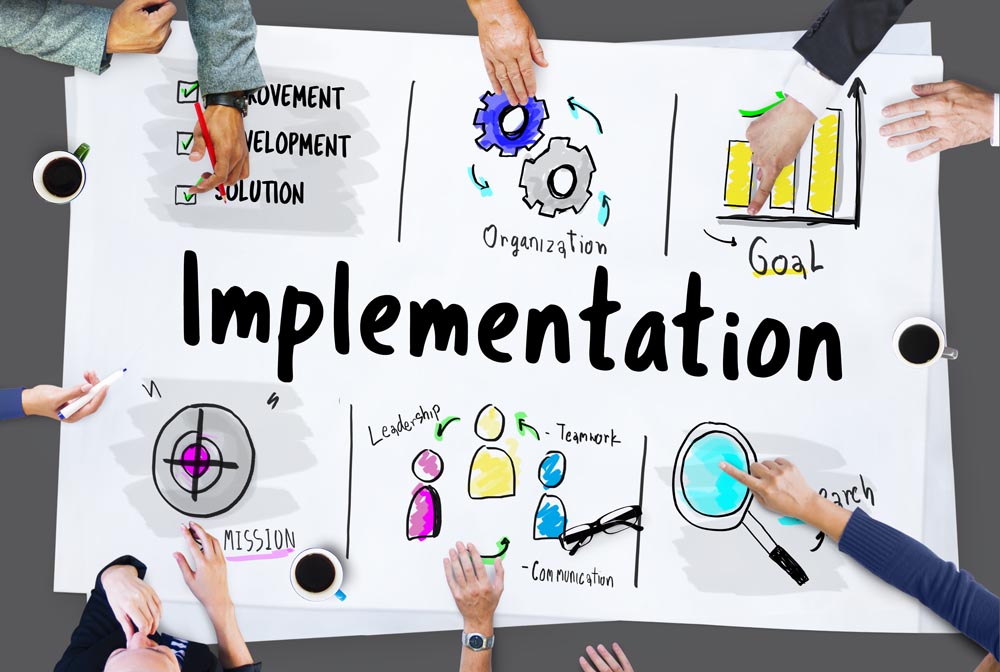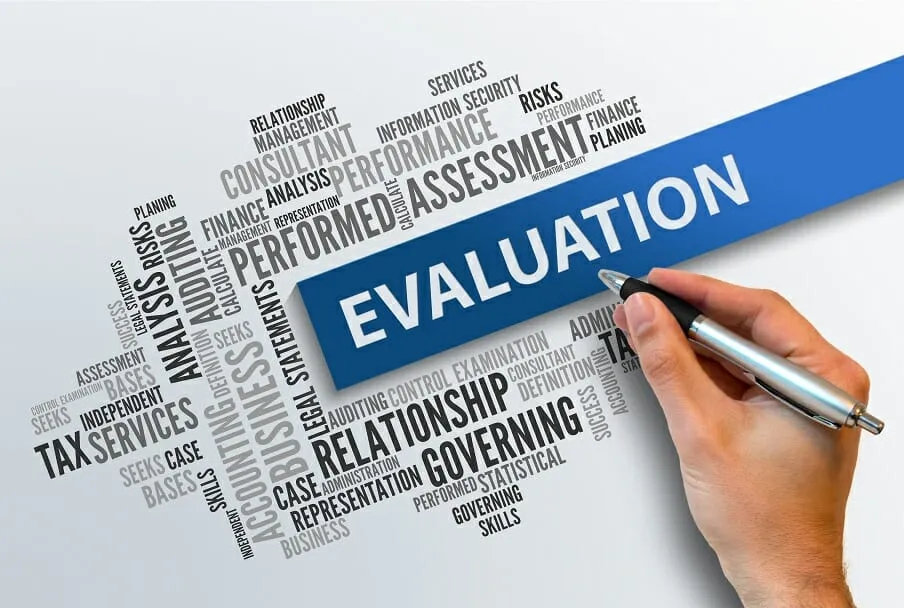Business Analysis Life Cycle: Everything You Need to Know
Business Analysis Life Cycle (BALC) is a vital concept in today’s fast-paced, ever-evolving corporate environment.
When it comes to project management and business process improvement, comprehending the ins and outs of the Business Analysis Life Cycle can mean the difference between the success or failure of a project.
This detailed guide aims to shed light on the intricacies of the Business Analysis Life Cycle, giving you the tools, you need to navigate the complex landscape of business analysis.
Business Analysis Life Cycle is a systematic process that provides a structure for conducting business analysis activities.
The core objective of BALC is to evaluate the business needs, identify potential solutions, and help to implement them to drive improvements.
One critical aspect of BALC is that it is iterative, meaning it continually evolves to accommodate changes in the business environment.
This characteristic is what makes the Business Analysis Life Cycle so adaptable and versatile.
The Business Analysis Life Cycle is divided into several phases, each serving a specific purpose within the broader process.
Though different businesses may employ variations of these phases, the primary stages of the Business Analysis Life Cycle are: need identification, analysis, solution design, implementation, and evaluation.
Need Identification

The need identification phase in the Business Analysis Life Cycle (BALC) is pivotal as it lays the foundation for the entire project.
The objective is to ensure that the business analyst identifies and understands the business needs accurately.
This understanding serves as the guiding compass for subsequent phases of the BALC.
The business case developed during this phase articulates the problem, its impact, the proposed solution, and expected benefits. This document can be instrumental in securing project approval and funding.
Additionally, by identifying the project’s stakeholders, the business analyst ensures that all parties affected by the change have a say in the process.
This stakeholder buy-in is critical for the successful adoption of the solution. The project vision document, meanwhile, provides a high-level view of the expected outcome, fostering alignment amongst stakeholders and project team members.
In terms of the RACI (Responsible, Accountable, Consulted, Informed) matrix, the business analyst (BA) and project manager (PM) play crucial roles in this phase of the BALC.
The business analyst is typically responsible for conducting stakeholder interviews, drafting the business case, and creating the project vision document. They are also accountable for ensuring the accuracy of the identified business need.
The project manager, on the other hand, is generally responsible for overseeing the need identification process and ensuring the project aligns with the organization’s strategic goals.
They are also accountable for the project’s overall success. Other project roles such as the solution architect and subject matter experts are often consulted during this phase for their technical expertise and business knowledge. They contribute valuable insights that help shape the business case and project vision.
To summarise, the need identification phase of the Business Analysis Life Cycle holds paramount importance. It sets the project direction and helps secure stakeholder buy-in.
From the RACI perspective, the business analyst and project manager, along with other project roles, have distinct responsibilities ensuring the effective execution of this phase.
Thus, this phase forms a solid foundation for the rest of the project, making it a crucial part of the BALC.
Analysis

The analysis phase of the Business Analysis Life Cycle (BALC) involves a deep dive into the business needs identified in the previous phase.
Here, the business analyst details the requirements that will guide the design and implementation of the solution.
It is a crucial step that builds upon the foundation laid during the need identification phase and provides a comprehensive understanding of what the project should accomplish.
Creating the Business Requirement Document (BRD), Functional Requirement Specification (FRS), and Non-Functional Requirement Specification (NFRS) during this phase ensures that all aspects of the solution are well-defined.
By outlining the business, functional, and non-functional requirements, these documents provide a clear and complete picture of the solution.
Tools like SWOT analysis, risk analysis, and cost-benefit analysis further add depth to the understanding of the requirements.
The benefits of this comprehensive approach are twofold. It reduces the risk of miscommunication or misunderstanding about the project expectations, and it provides a solid basis for designing a solution that fits the business need perfectly.
In terms of the RACI matrix in the analysis phase of the BALC, the business analyst (BA) is generally responsible for drafting the requirement documents and conducting various analyses.
This responsibility involves interacting closely with stakeholders to gather and clarify requirements, documenting them accurately, and analysing them to ensure they align with the business needs.
The project manager (PM) and the solution architect, meanwhile, often have shared responsibilities in this phase.
They collaborate with the business analyst to validate and refine the requirements, ensuring that they are feasible and align with the project’s scope.
The project manager is also accountable for the project’s alignment with its initial goals and objectives, while the solution architect is typically accountable for the technical feasibility of the proposed solution.
Overall, the analysis phase of the Business Analysis Life Cycle plays a critical role in ensuring that the project is based on well-understood, thoroughly analysed, and accurately documented requirements.
The RACI matrix for this phase clearly delineates the responsibilities of the BA, PM, and solution architect, ensuring effective collaboration and successful project execution.
Solution Design

In the solution design phase of the Business Analysis Life Cycle (BALC), business analysts work to craft an optimal solution that best addresses the business needs identified and analysed in the preceding phases.
It’s in this phase that the practical design of the solution begins to take shape, guided by the business requirements established earlier.
The business analyst will devise an intricate plan that aligns with the business requirements and is feasible within the constraints of resources and technology.
The goal is to generate a solution design that will effectively solve the business problem, improve processes, and add value to the business.
One of the primary deliverables of this phase is the Solution Design Document (SDD), a comprehensive guide that outlines the solution’s structure, its components, the interaction among these components, and how the solution will function to address the business requirements.
Another critical document produced in this phase is the Business Process Model (BPM), which depicts the proposed business processes in a graphical representation, making it easier for stakeholders to understand the proposed changes.
Techniques like use case modelling, user stories, and wireframing are often utilized in this phase to visualize the solution’s functionality and user interaction.
For instance, in a project where a healthcare provider is looking to digitalize patient records, the business analyst might generate user stories to capture the specific functionalities of the digital system.
Wireframes might also be developed to provide a visual representation of the user interface.
In this phase, the roles and responsibilities of the business analyst (BA), project manager (PM), and solution architect are clearly delineated.
The BA is responsible for producing the SDD and BPM, and for utilizing various techniques to envision the solution.
The solution architect collaborates with the BA to ensure the solution design aligns with the enterprise architecture and is technically viable. They also assist in defining the solution’s technical specifications.
The PM, on the other hand, is responsible for monitoring the progress of the solution design phase, ensuring it stays on track and within budget.
The PM is also accountable for facilitating communication between the BA, the solution architect, and other stakeholders, ensuring the smooth progression of the project.
This collaborative effort during the solution design phase is crucial for ensuring the solution proposed will effectively meet the business requirements and add value to the business.
The Business Analysis Life Cycle, with its structured approach to problem-solving, ensures that each phase is handled meticulously, leading to successful project outcomes.
Implementation

The implementation phase of the Business Analysis Life Cycle (BALC) is where the carefully planned solution becomes a reality.
All the groundwork established in the need identification and analysis phases is put into action, making the implementation phase critical to the project’s success.
It involves executing the solution design, monitoring progress, managing changes, and ensuring alignment between the implemented solution and the initial requirements.
Creating the Implementation Plan and Traceability Matrix are two vital tasks in this phase.
The Implementation Plan provides a roadmap for the deployment of the solution, detailing steps, timelines, and resources.
The Traceability Matrix, on the other hand, ensures that each requirement defined during the analysis phase is addressed in the implemented solution.
This reduces the risk of missing any requirements and ensures alignment between what was planned and what is delivered.
The benefits of this phase are evident – it brings the proposed solution to life and provides a means to measure its effectiveness and alignment with the original business need.
The RACI matrix for this phase of the BALC outlines the role of the business analyst (BA), project manager (PM), and solution architect. The BA is typically responsible for preparing the Implementation Plan and the Traceability Matrix.
They also oversee change management, ensuring that any adjustments to the plan align with the business need and are well-communicated to all stakeholders.
The PM, on the other hand, is responsible for project management, overseeing the execution of the Implementation Plan, and managing project risks. They are accountable for delivering the solution within the agreed timeline, budget, and scope.
The solution architect collaborates with the BA and PM, providing technical guidance throughout the implementation phase.
They are responsible for ensuring the solution aligns with the defined technical requirements and architectural standards, thereby ensuring the successful implementation of the solution.
In conclusion, the implementation phase of the Business Analysis Life Cycle is crucial as it brings the solution to life.
The responsibilities of the BA, PM, and solution architect, as outlined in the RACI matrix, ensure effective execution of this phase, leading to a solution that aligns perfectly with the initial business requirements.
Evaluation

The evaluation phase is the final stage of the Business Analysis Life Cycle (BALC) where the impact and effectiveness of the implemented solution are measured.
It involves assessing how well the project has achieved its objectives and whether the solution has indeed addressed the original business needs.
The purpose of this phase is to ensure that the delivered solution is adding value to the business and to identify opportunities for improvement in future projects.
Producing evaluation reports, using performance metrics, collecting stakeholder feedback, and benchmarking against established standards are some of the key tasks performed in this phase.
These reports and the insights drawn from them enable the business to understand the return on their investment and determine whether the solution should be sustained, improved, or replaced.
The benefits of this phase are clear: it provides an opportunity to reflect on the project, gain insights for the future, and reaffirm the solution’s alignment with the business’s strategic objectives.
As far as the RACI matrix for the evaluation phase of the BALC goes, the business analyst (BA), project manager (PM), and solution architect all have essential roles to play.
The BA is typically responsible for creating the evaluation reports and gathering stakeholder feedback. They assess whether the solution is meeting the initial requirements and delivering expected benefits.
The PM is primarily responsible for reviewing the project performance against the planned time, budget, and scope.
They ensure that the lessons learned are documented for future projects and are accountable for the final project closure.
The solution architect, in consultation with the BA and PM, reviews the technical performance of the solution.
They are responsible for ensuring that the implemented solution is technically sound and performs optimally.
To sum up, the evaluation phase of the Business Analysis Life Cycle is crucial as it helps gauge the success of the project and draws insights for future improvements.
The defined responsibilities of the BA, PM, and solution architect in the RACI matrix ensure a thorough evaluation, reinforcing the value and effectiveness of the BALC in the successful execution of business projects.
Difference Between BALC, SDLC, and PDLC: An Essential Overview
The Business Analysis Life Cycle (BALC), the Software Development Life Cycle (SDLC), and the Product Development Life Cycle (PDLC) are key frameworks guiding project management in different sectors.
Each of these life cycles serves a unique purpose and follows a distinct process.
The BALC is a comprehensive process that outlines the business analyst’s role in identifying business needs, analysing requirements, designing and implementing solutions, and evaluating outcomes.
It’s used across industries, from software to manufacturing, making it a versatile tool for addressing a wide range of business problems.
BALC has five phases: need identification, analysis, solution design, implementation, and evaluation.
The SDLC is specifically tailored for software development. It offers a structured process for developing high-quality software, covering requirements gathering, design, implementation, testing, deployment, and maintenance.
Unlike BALC, SDLC is predominantly focused on the roles of software developers and architects, making it a go-to framework in the IT industry.
PDLC, meanwhile, is used in the creation of tangible products. It involves concept creation, feasibility study, design and development, testing, launch, and evaluation.
The PDLC is primarily guided by product managers, designers, and engineers, and it takes a more holistic approach to product development, from conception to market launch and beyond.
While BALC, SDLC, and PDLC all provide a structured approach to project management, their applications are quite different.
BALC is a universal model applicable across all industries, SDLC is specific to the software industry, and PDLC is utilized in the creation of tangible products.
Understanding these differences can help project managers choose the most effective approach for their project’s specific needs.
In a nutshell, BALC, SDLC, and PDLC are crucial frameworks guiding project execution.
Each focus on a different aspect and is tailored to specific types of projects. Understanding their differences can optimize project management and ultimately lead to more successful project outcomes.









